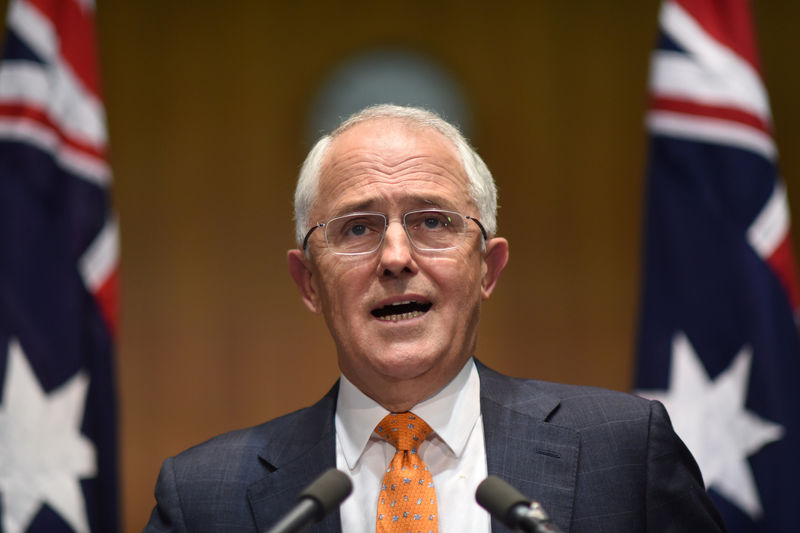* 17/18 budget deficit seen at A$23.6 bln, down from A$29.4 bln
* Surplus projected at A$10.2 bln in 2020/21
* Net debt forecast to peak at 19.2 pct of GDP
By Wayne Cole
SYDNEY, Dec 18 (Reuters) - Australia's conservative government on Monday predicted its budget deficit would shrink faster than previously expected and finally return to surplus in 2020/21, putting an end to a decade of shortfalls.
Treasurer Scott Morrison portrayed the improvement as a reward for tough curbs on government spending, though in truth it was due largely to events beyond political control.
A combination of stronger job creation, lower unemployment payments and higher earnings from commodity exports helped offset weakness in wages and consumer spending.
It was welcome news for Prime Minister Malcolm Turnbull, relieved after narrowly winning a crucial weekend Sydney by-election to keep his razor-thin majority in the lower house.
In his mid-year budget update, Morrison said the deficit for the year to June 2018 was now likely to be around A$23.6 billion ($18.05 billion). That was down from A$29.4 billion predicted in the May budget and amounted to 1.3 percent of Australia's annual gross domestic product (GDP).
The deficit was projected to shrink to A$20.5 billion in 2018/19 and A$2.6 billion the year after, before turning into a A$10.2 billion surplus in 2020/21.
The better budget outlook has allowed Turnbull, badly lagging the opposition Labor Party in opinion polls, to dangle the prospect of cuts in income taxes next year.
"The case could be made that the current budget profile provides the scope for modest tax cuts for individuals," said Westpac chief economist Bill Evans.
This would most probably take the form of an increase in tax thresholds, rather than cuts in rates themselves.
The government has also proposed slashing taxes for large corporations to 25 percent, from 35 percent now, a move it says is needed to stay competitive with the United States, where the Republican party is pushing to cut rates.
The A$50-billion plan has so far been stymied by resistance in the Australian Senate, where Turnbull does not hold a majority, and its fate remains uncertain.
Morrison kept his main economic forecasts largely unchanged, but did trim projections for wages growth which slowed to record lows this year.
The country's net debt was projected to peak around A$365 billion in 2019/20, or 19.2 percent of GDP.
Australia's debt levels are modest compared to its rich world peers, a major reason it is rated triple-A by all three of the major agencies.
S&P Global Ratings does have the country on a negative outlook but has sounded less concerned in recent months, in part thanks to a shrinking current account deficit.
"There seems little in the current track of the budget numbers that would see S&P act on this outlook in the near term," said NAB chief economist Ivan Colhoun.
"That said, the agency will likely reiterate that their medium-term concerns about net external indebtedness remain and hence the negative outlook seems likely to stay." ($1=1.3077 Australian dollars)
